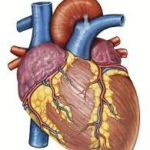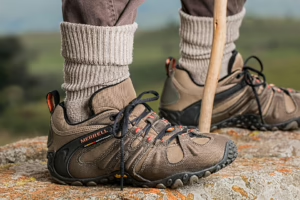Preventing Muscle Spasms: Tips for Athletes and Active Individuals
Muscle spasms, involuntary contractions of one or more muscles, can be a nuisance for athletes and active individuals. They can occur during exercise, after exercise, or even during periods of rest, leading to discomfort, performance issues, and disruptions in training. Understanding the causes and prevention methods for muscle spasms is crucial for maintaining peak performance and ensuring overall well-being.
Understanding Muscle Spasms
What Are Muscle Spasms?
Muscle spasms are sudden, involuntary contractions of a muscle or group of muscles. They can vary in duration and intensity, from mild twitches to severe, painful cramps. Spasms can occur in any muscle group, but they are most common in the legs, back, and neck.
Common Causes
Several factors can contribute to muscle spasms, including:
- Dehydration: Insufficient fluid intake can lead to an imbalance of electrolytes, which are essential for muscle contractions.
- Electrolyte Imbalance: Low levels of potassium, calcium, or magnesium can disrupt normal muscle function.
- Overexertion: Intense exercise or prolonged activity without proper conditioning can lead to muscle fatigue and spasms.
- Poor circulation: Reduced blood flow to muscles during exercise can result in cramping and spasms.
- Nerve compression: Conditions that pin or irritate nerves can also trigger muscle spasms.
Symptoms
The symptoms of muscle spasms can include:
- A tight or bulging muscle
- Sudden, intense pain
- Inability to use the muscle normally
- Muscle fatigue or weakness after the spasm subsides
Risk Factors
Certain groups are more susceptible to muscle spasms, including:
- Athletes: Due to the physical demands of training and competition, athletes are at a higher risk for muscle spasms.
- Older Adults: Age-related muscle and nerve changes can increase susceptibility.
- Individuals with Certain Medical Conditions: Conditions like diabetes, multiple sclerosis, or dehydration-related illnesses can contribute to muscle spasms.
Prevention Strategies
Preventing muscle spasms requires a multifaceted approach that includes hydration, nutrition, conditioning, and proper recovery. Below are key strategies designed to help athletes and active individuals minimize the likelihood of experiencing muscle spasms.
1. Stay Hydrated
Hydration is Fundamental
Water not only sustains overall health but also helps regulate body temperature and lubricate joints. During exercise, particularly in hot conditions, staying hydrated is crucial.
- Before Exercise: Drink enough fluid to be well-hydrated. Aim for about 17–20 ounces (500–600 mL) of water two to three hours before exercising.
- During Exercise: For workouts lasting more than an hour, consider electrolyte drinks that replace lost salts and fluids.
- After Exercise: Rehydrate with water and consider a sports drink to replenish electrolytes.
2. Maintain Electrolyte Balance
Nutritional Considerations
Consuming adequate amounts of micronutrients that are critical for muscle function can prevent imbalances.
- Key Electrolytes: Ensure sufficient intake of potassium, sodium, calcium, and magnesium through food sources like bananas, nuts, dairy products, and leafy greens.
- Sports Supplements: In some cases, consider electrolyte supplements, especially during prolonged high-intensity workouts or in hot weather.
3. Warm-Up and Cool Down
The Importance of Preparation and Recovery
Dynamic warm-ups prepare the body for exercise, increasing blood flow and flexibility.
- Active Warm-Up: Incorporate activities like jogging, dynamic stretching, or mobility work for at least 10 to 15 minutes before your workout.
- Cool-Down Routine: Post-exercise, engage in static stretching to release tension and promote recovery.
4. Gradual Progression in Intensity
Training Smart
Avoid the temptation to jump into high-intensity workouts without preparation.
- Progressive Overload: Gradually increase workout intensity, duration, and complexity to allow your muscles and nervous system to adapt.
- Rest and Recovery: Incorporate scheduled rest days into training to allow muscles to recover and prevent overuse injuries.
5. Use Proper Technique and Equipment
Investing in Yourself
Correct form and training methods are essential to prevent unnecessary strain on muscles.
- Technique Training: Work with a coach or trainer to ensure proper movement mechanics.
- Appropriate Footwear: Wear suitable shoes to provide the necessary support during physical activity.
6. Focus on Flexibility and Strength
Balanced Training
Incorporate a combination of strength training and flexibility exercises into your routine.
- Strength Training: Focus on strength-building exercises that target major muscle groups, as stronger muscles are less prone to spasms.
- Flexibility Training: Regular stretching sessions can increase range of motion and reduce muscle tightness.
7. Listen to Your Body
Recognizing Signs of Fatigue
Understanding personal limits is crucial for preventing muscle spasms.
- Pay Attention to Signals: If you begin to feel tired, don’t hesitate to take a break.
- Modify Intensity: Adjust workouts based on how your body feels on any given day.
8. Incorporate Massage and Physical Therapy
Recovery Techniques
Regular massages or consultations with physical therapists can keep muscles functional and prevent spasms.
- Regular Massage Therapy: Helps release muscle tension and improves circulation.
- Physical Therapy: Can address specific issues or imbalances that might contribute to spasms.
Lifestyle Choices
Maintaining a healthy lifestyle can indirectly help prevent muscle spasms.
1. Balanced Nutrition
Eating for Performance
Consuming a balanced diet filled with macronutrients and micronutrients is essential for overall muscle health.
- Whole Foods: Focus on a diet rich in fruits, vegetables, lean proteins, whole grains, and healthy fats.
- Anti-inflammatory Foods: Omega-3 fatty acids found in fish and walnuts can help reduce inflammation that may contribute to spasms.
2. Stress Management
The Mind-Body Connection
High-stress levels can lead to muscle tension and spasms.
- Stress-Relief Techniques: Consider meditation, yoga, deep breathing exercises, or other relaxation techniques to reduce stress.
3. Quality Sleep
Rest and Recovery
Adequate sleep is crucial for muscle recovery and overall health.
- Prioritize Sleep: Aim for 7-9 hours of quality sleep per night to support recovery and wellness.
When to Seek Medical Attention
While muscle spasms are often benign, there are times when medical attention may be warranted.
1. Chronic Spasms
If spasms occur frequently or persist despite lifestyle changes, consulting a healthcare professional is advisable.
2. Severe Pain
Seek immediate care if spasms are associated with severe pain, swelling, or physical injury.
3. Other Symptoms
If spasms are accompanied by other troubling symptoms, such as numbness or weakness, consult a healthcare provider for further evaluation.
Conclusion
Muscle spasms can be frustrating for athletes and active individuals, but with proactive measures, they can often be prevented. Staying hydrated, maintaining electrolyte balance, listening to one’s body, and incorporating appropriate warm-up and cool-down routines are foundational strategies. By integrating strength and flexibility training, managing stress, and focusing on proper nutrition, athletes can significantly reduce their risk of experiencing muscle spasms and optimize their performance.
Incorporate these strategies, and enjoy a more fulfilling and pain-free active lifestyle!
References
- Hydration and exercise performance.
- Electrolytes and muscle function.
- The role of warm-up in reducing injuries.
- Muscle cramps: Causes and prevention.
- Nutrition and physical activity.
This article provides a comprehensive understanding of preventing muscle spasms for athletes and active individuals, highlighting actionable strategies and lifestyle choices that can enhance performance and well-being.


























Add Comment